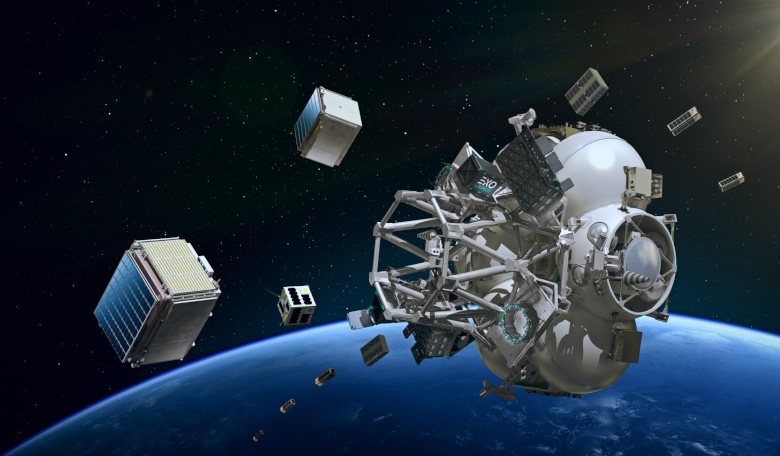NanoAvionics, a multinational nanosatellite bus manufacturer and mission integrator, announced the successful launch of another Lacuna Space IoT satellite, and a third one being ready for launch at a later date. Operational communications with the nanosatellite in low Earth orbit (LEO) were established shortly after the launch. For this latest mission, NanoAvionics partnered with Germany-based Exolaunch, which provided the deployer and launch services onboard a Soyuz-2 rocket.
Despite the ongoing pandemic, NanoAvionics and Lacuna Space, both based at the UK’s Harwell space cluster, managed to complete all the steps prior to launch, from contract signing to testing and integrating the payload into NanoAvionics’ M3P nanosatellite bus, within eight months.
The payload, developed and built by Lacuna Space, consists of an IoT (internet of things) Space Gateway, able to receive and share data from small, battery powered sensors even in remote areas on the ground or at sea with little or no connectivity. The mission has been part-funded and supported by the UK Space Agency and ESA.
Vytenis J. Buzas, CEO of NanoAvionics said: “Having previously worked together to build and launch the first nanosatellite for Lacuna Space’s satellite system, I’m excited about this latest successful launch. Lacuna's IoT sensor and gateway technology has the potential to open a whole new world of smart applications and collaborating on this has been fantastic, and allowed us to optimise our technology for integrating IoT payloads, too.
“In return, by employing a series of quality assurance tests and using our flight proven and standardised bus, we are able to combine high-quality performance with low cost and short integration cycles – a very attractive combination for our customers as shown by our continued business and revenue growth.”
This latest nanosatellite will join the Lacuna Network, which will provide a global internet-of-things service via a nanosatellite constellation in low Earth orbit (LEO) and autonomous sensors everywhere on Earth.
Using LoRa (long range) technology, the de-facto standard for low power connectivity, to communicate with the Space Gateway and batteries similar to those in wrist watches, make the Lacuna sensors low cost, extremely power efficient and able to last for years. And the LoRaWAN protocol allows for the latest security features to be included in devices and across the Lacuna Network. Applications for IoT services via the Lacuna Network stretch from agriculture, environmental, wildlife and marine monitoring to asset tracking and mobility.
Rob Spurrett, CEO Lacuna Space said: “The speed with which Nano Avionics has managed to get this mission integrated and launched is very impressive, especially given all the current virus-related constraints. Thankfully, the back-log of commercial launches is now moving and our next launch after this will be another NanoAvionics platform. On behalf of Lacuna, I’d like to thank everybody at NanoAvionics for their support and professionalism.”











